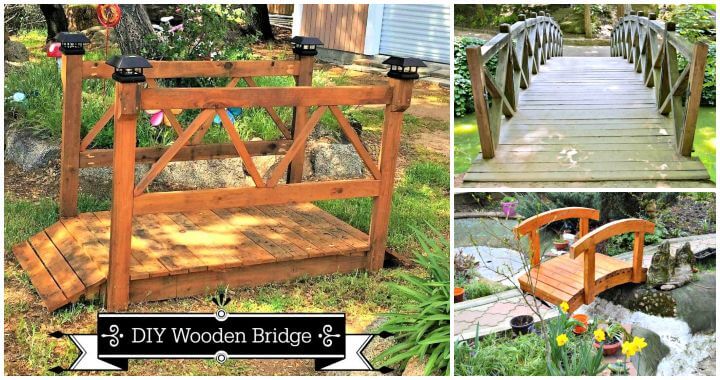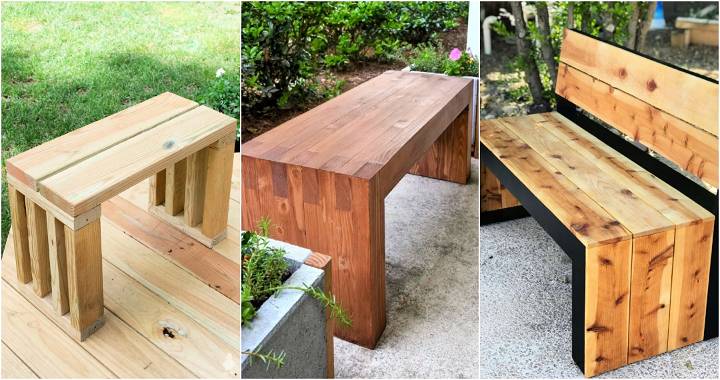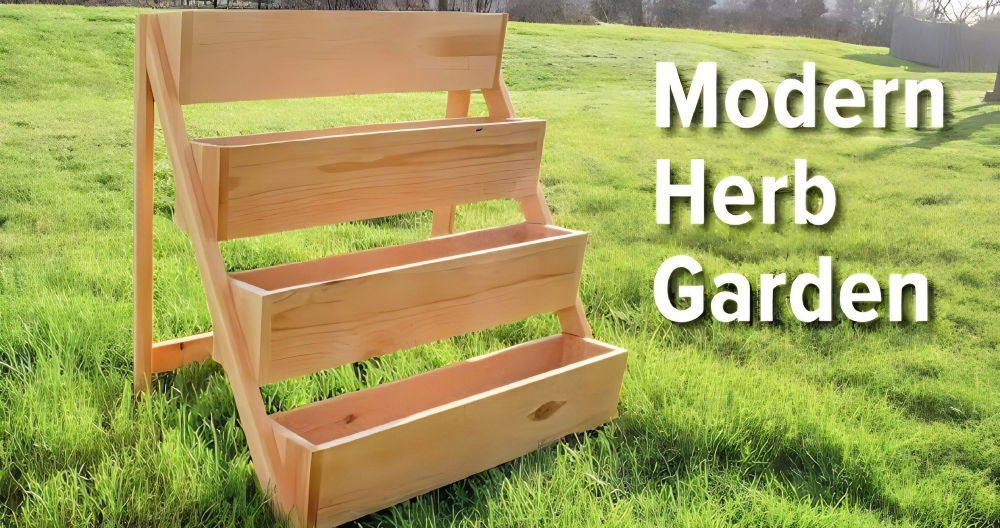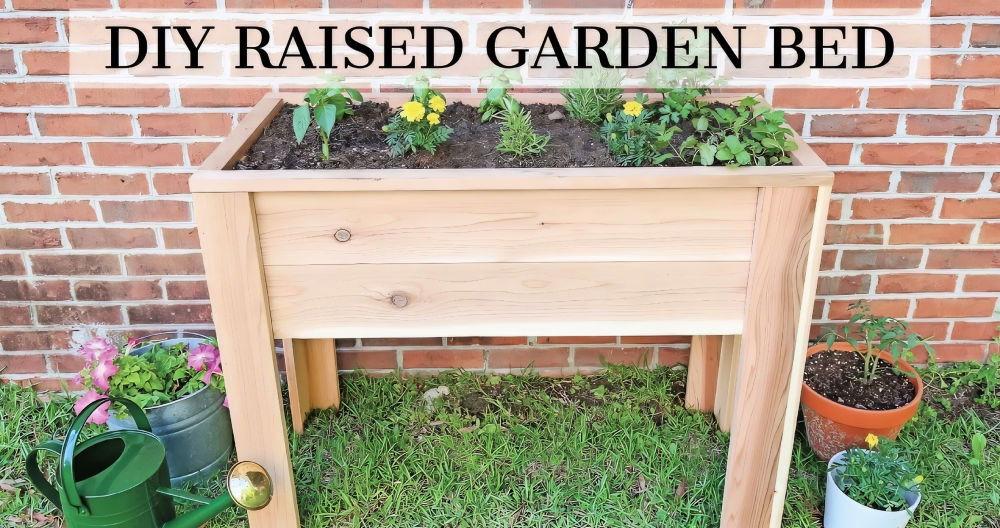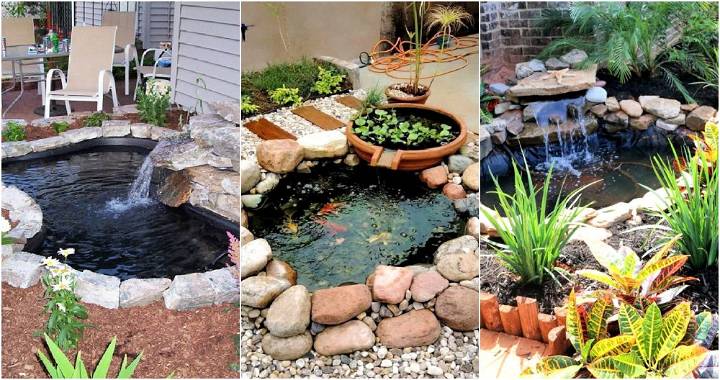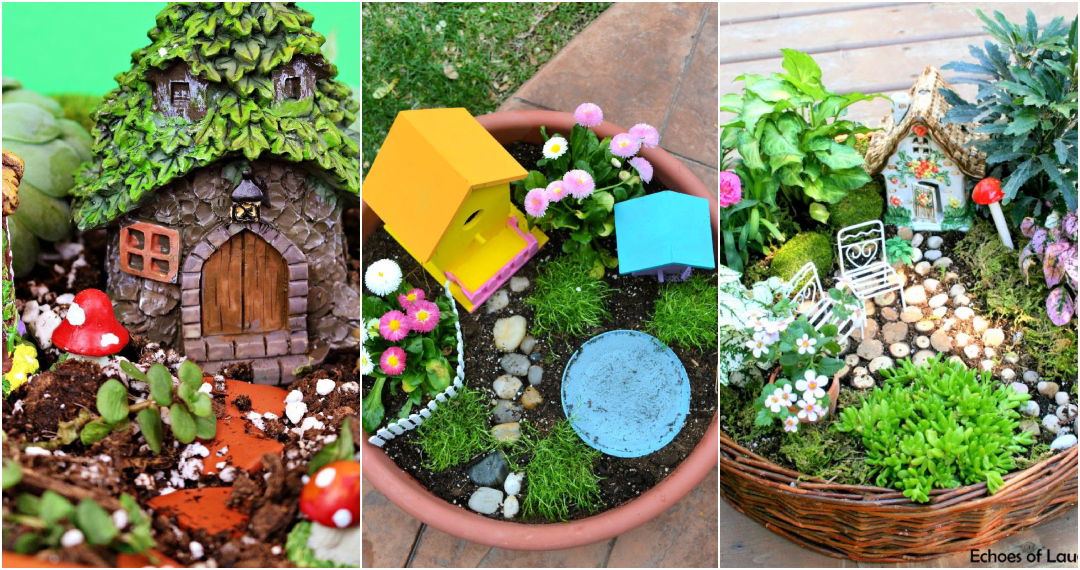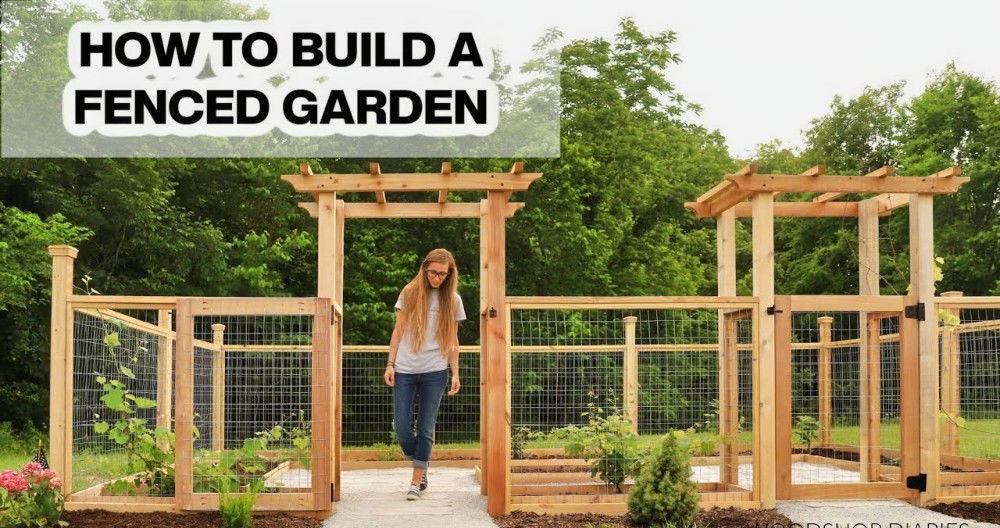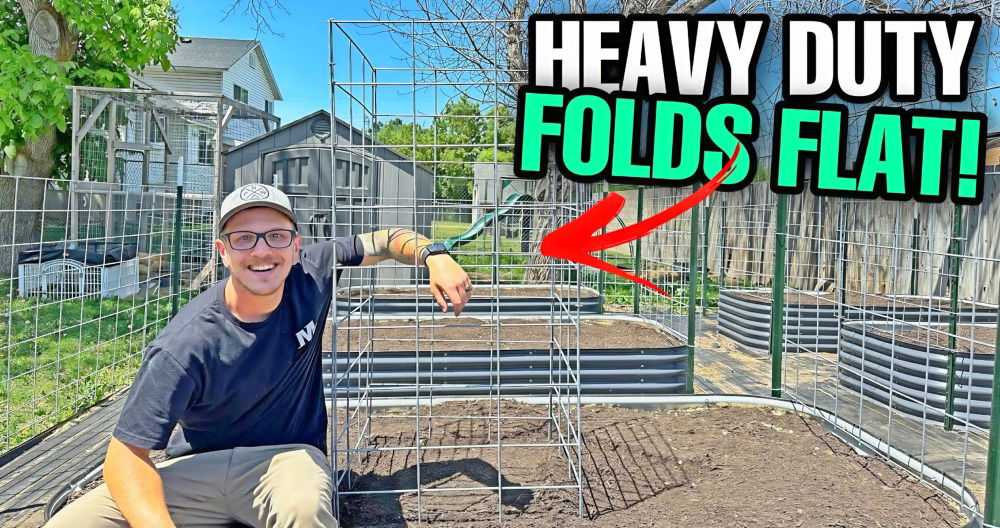Making my own DIY garden tool organizer seemed like a big task at first. I had garden tools scattered all over, and finding what I needed was hard. With a clear plan, I decided to build one myself using simple materials. Building something on my own felt great, and I kept all my tools in one place.
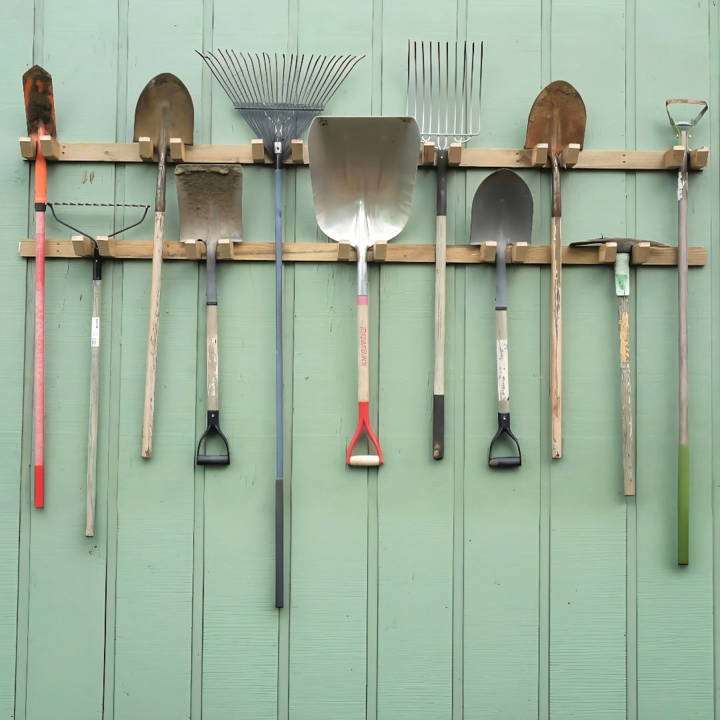
Now, I know where every garden tool is. No more searching for shovels or rakes anymore. This DIY garden tool storage solution has saved me time and space. If you're struggling with gardening tools everywhere, I recommend giving this method a try. I'm helping with simple steps and practical ideas you can use.
Step by Step Instructions
Learn how to build a DIY garden tool organizer with our step-by-step instructions. Keep your tools organized and accessible.
Planning: The Initial Blueprint
My garden tools were a scattered ensemble of shovels, rakes, and various other implements, each with its unique shape and size, demanding a bespoke organizing solution. The first step was to categorize my tools and decide on a system that would allow easy access and efficient storage. After several arrangements and reconfigurations, I opted for a two-layer setup that seemed to utilize the available space optimally without overcrowding the tools.
Materials and Their Purpose
- 1x3 or 1x4 Lumber for Runners: These serve as the mainframe attached to the wall, acting as the backbone of the organizer.
- 2x3 Lumber for Arms: To make sturdy arms that protrude out to hang the tools. The thickness ensures they can bear the weight of the tools without bending or breaking.
- Six-inch Wood Blocks: These blocks, once notched, will be the actual arms where the tools rest.
- Three and a Half Inch Screws: These screws are used to attach the arms to the runners and the runners to the wall studs, ensuring a strong, reliable hold.
- Safety Gear (N95 Mask, Safety Glasses): Essential to protect oneself from wood dust and splinters during the cutting and drilling process.
Crafting the Core Components
The first tangible step was cutting the 1x3 lumber to make the runners. I meticulously marked the placement of the arms on the runners, aligning them with the layout of my tools. Turning my attention to the 2x3 lumber, I cut out six-inch blocks, which would later be transformed into notched arms, adding an aesthetic touch while serving a practical purpose.
The Notch: Precision and Aesthetics
Using a miter saw set at a 45-degree angle, I carefully crafted a notch in each six-inch block. This step was pivotal, as the notch would cradle the tool handles perfectly, preventing them from sliding off.
Assembly: Bringing It All Together
Pre-drilling the spots for the screws was a crucial step to avoid splitting the wood. The assembly process involved attaching the notched arms to the runners, ensuring the screw heads were flush against the wood to avoid any accidents. The meticulous task of screwing the runner into the wall studs followed, ensuring the organizer was securely anchored.
The Moment of Truth: Installation and Organization
With the runners and arms in place, it was time to position the tools. The 12-inch spacing between the two layers of runners provided ample room, and the notched arms proved to be perfectly suited for the varying shapes of tool handles. The opportunity to double or even triple-stack tools on each arm was an unexpected bonus, offering more storage without compromising accessibility.
The Final Verdict: A Gardener's Dream
The project culminated in a beautifully organized space where every tool had its place, easily accessible and off the ground. The satisfaction of crafting this organizer from scratch, coupled with the functional and aesthetic benefits it brought to my gardening practice, was immeasurable.
Customization Ideas for DIY Garden Tool Storage
Making a DIY garden tool storage system allows you to tailor a solution that perfectly fits your space, needs, and personal style. Here are some customization ideas to help you design a storage system that's as unique as your garden:
- Assess Your Space: Start by evaluating the area where you plan to store your tools. Measure the dimensions and consider the best use of space. Think vertically to maximize storage in small areas.
- Choose Your Materials: Select materials that are durable and weather-resistant. Consider repurposing old furniture or pallets for a rustic look, or use PVC pipes and fittings for a modular design.
- Design for Accessibility: Arrange your tools in a way that makes them easy to reach. Hang frequently used tools on pegboards or magnetic strips, and place less commonly used items on higher shelves or in drawers.
- Personalize with Color: Paint your storage units in bright colors or patterns that reflect your personality and add a cheerful touch to your garden area.
- Label Everything: Use labels to mark where each tool goes. This not only helps you find what you need quickly but also ensures that everything has its place.
- Incorporate Planters: Integrate small planters into your storage design to bring life and greenery to the area. This can also be a handy spot to grow herbs or flowers.
- Add Wheels: For larger storage units, consider adding casters so you can easily move them around as needed.
- Think Multi-Function: Build a storage bench where you can sit and relax in your garden, which also serves as a hidden storage space for tools.
- Secure Your Tools: Install locks or latches on cabinets or drawers to keep your tools safe and secure, especially if you have young children around.
- Reflect Your Garden's Style: Match your storage system's style with the theme of your garden. Whether it's cottage, modern, or minimalist, let your storage be an extension of your garden's personality.
Incorporate these ideas to craft a functional and creative garden tool storage system. Aim to enhance your gardening efficiency and joy by tailoring it to your needs.
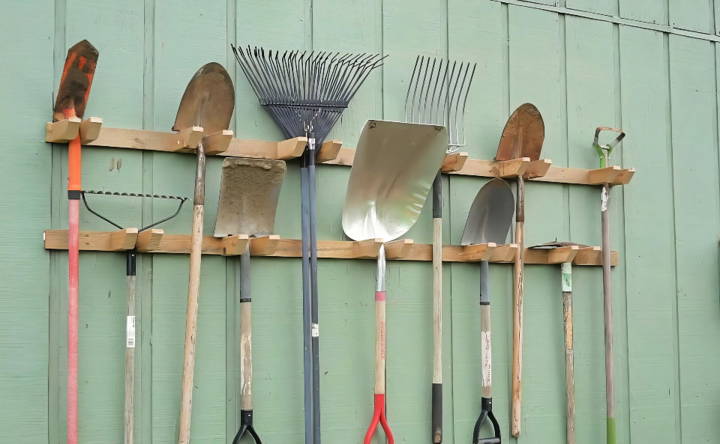
Advanced Techniques in DIY Garden Tool Storage
When it comes to DIY garden tool storage, advanced techniques can offer convenience and efficiency for the avid gardener. Here's how you can incorporate some high-tech solutions and sophisticated methods into your storage plans:
- Automated Retrieval Systems: Consider installing a simple pulley system or a more sophisticated automated retrieval system to access tools easily. This can be especially handy for heavy or frequently used items.
- Smart Labeling: Use QR codes or NFC tags on your storage bins or shelves. With a quick scan using a smartphone, you can keep an inventory of your tools or even link to maintenance schedules.
- Climate Control: For sensitive tools or supplies, install a small climate control unit within your storage space to prevent rust and degradation due to humidity.
- Solar Power: Harness solar energy to power lighting or small electronic systems in your garden shed. This is not only eco-friendly but also ensures you have visibility at any time of the day.
- Modular Design: Make a modular storage system that can be easily reconfigured as your tool collection grows. Use slotted walls or magnetic panels for flexibility.
- Fold-Away Workbench: Incorporate a fold-away workbench that can be stowed when not in use, providing extra space and a sturdy surface for garden-related tasks.
- Security Features: Install motion-sensor lights and cameras to deter theft and keep your garden tools safe.
- Integrated Charging Stations: Set up a charging station for your battery-powered tools so they're always ready to use.
- Water-Resistant Coatings: Apply water-resistant coatings to wooden surfaces to protect against moisture and extend the life of your DIY storage.
- App Integration: Develop or use an existing garden management app to track tool usage, maintenance reminders, and even provide tips on tool care.
Integrating advanced techniques turns your garden tool storage into a smart, adaptive part of your routine, boosting functionality and enjoyment with modern innovation.
FAQs About DIY Garden Tool Storage
Discover practical tips and solutions for DIY garden tool storage in our comprehensive faqs. Organize your tools efficiently and save space!
One of the easiest DIY solutions is to create a wall storage rack using ½” plywood, dimensional lumber, and 2” PVC. You can also build a garden tool rack in less than an hour using a length of 1×6 lumber, metal brackets, and screws. These solutions are not only simple to construct but also allow for customization to fit your space and tool collection.
For small tools, consider using shelves, hooks, or magnetic strips to keep them organized and easily accessible. You can also repurpose old containers or cans to hold smaller items. Labeling each storage area helps maintain organization and saves time when searching for the right tool.
Yes, you can create a portable tool storage shed on wheels. This is particularly useful if you have a large garden or need to move tools around frequently. Using dimensional lumber, screws, and wheels, you can build a mobile shed that can be moved to wherever you're working in the garden.
To make an eco-friendly storage solution, use reclaimed wood and non-toxic finishes. Additionally, designing your storage to maximize space and reduce clutter can also contribute to a more sustainable gardening practice by extending the life of your tools through proper maintenance and storage.
To protect your garden tools from rust, ensure your storage area is dry and well-ventilated. You can also hang tools off the ground to prevent moisture contact. Applying a light coat of oil to metal parts before storing can help prevent rust. For added protection, consider using silica gel packs in your storage containers to absorb any excess moisture.
Conclusion:
Building a DIY garden tool organizer can make your garden work much easier and more fun. Remember, a well-organized tool setup saves effort and brings convenience to your gardening days.





